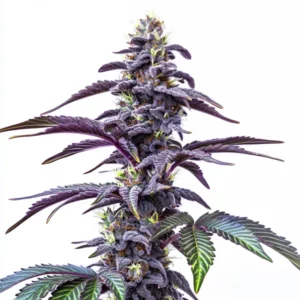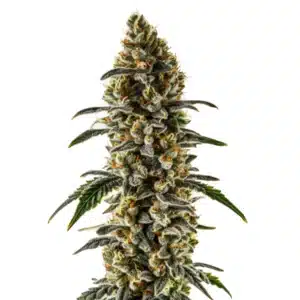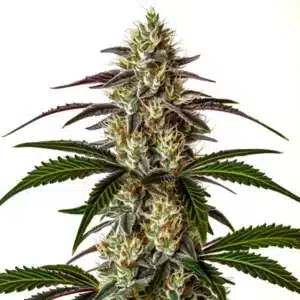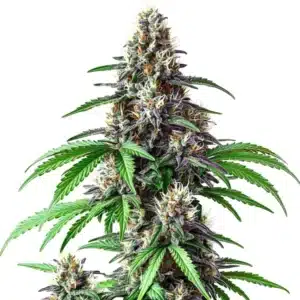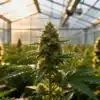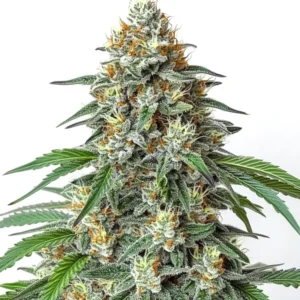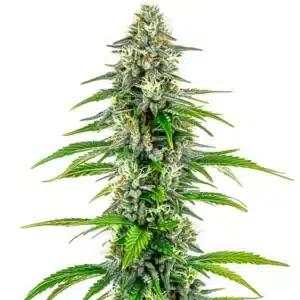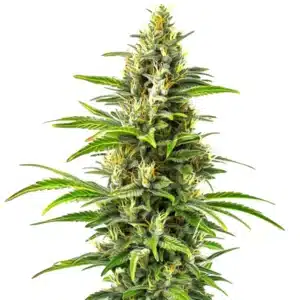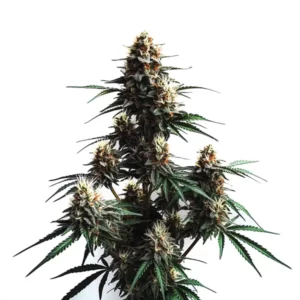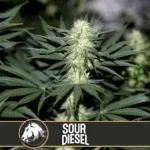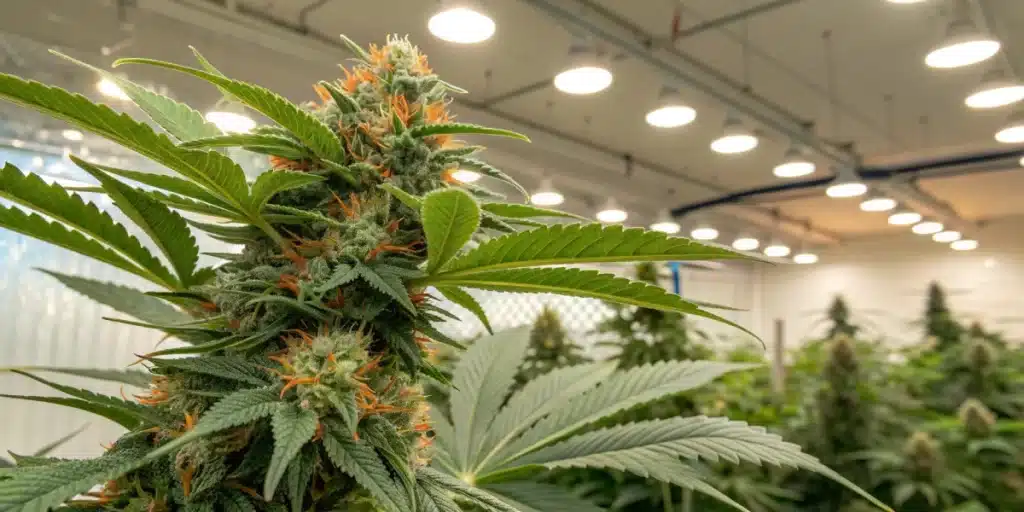
How to Grow BC Diesel Weed Strain
BC Diesel Weed Strain Description
BC Diesel Weed Strain is a feminized hybrid with a genetic composition of 35% Indica and 65% Sativa. A cross between Jack Herer and NY Diesel, this strain stands out for its uplifting and creative effects. Its balanced nature appeals to both recreational and medicinal users, making it a popular choice among cultivators and consumers alike.
The buds of BC Diesel are dense, coated with trichomes, and exhibit a vibrant green hue with occasional orange pistils. The aroma is a mix of citrus and fruity notes, delivering a refreshing and zesty flavor that enhances the smoking experience. With THC levels ranging from 18% to 20% and a low CBD content of 0.6% to 0.8%, this strain offers potent effects without overwhelming beginners.
Recommended Strains
BC Diesel
|
|
THC | 18% - 20% (Medium) |
|
|
Type | Feminized |
|
|
Yield | Medium |
|
|
Phenotype | 35% Indica / 65% Sativa |
NYC Diesel
|
|
THC | 20% (Medium) |
|
|
Type | Feminized |
|
|
Yield | High |
|
|
Phenotype | 40% Indica / 60% Sativa |
Known for its energizing properties, BC Diesel can help relieve symptoms of arthritis, insomnia, and pain. The strain’s terpene profile includes Alpha-Pinene, Alpha-Terpineol, and Limonene, which contribute to its distinct aroma and therapeutic effects.
Promos & Deals
Environmental Requirements for Growing BC Diesel
BC Diesel thrives in both indoor and outdoor environments, though providing optimal conditions is key to maximizing its potential. The strain prefers a warm climate with daytime temperatures between 70°F and 80°F (21°C – 27°C). Stable humidity levels and proper airflow help prevent issues such as mold and mildew.
Indoor Cultivation
Indoor growers should invest in quality LED or HPS grow lights to simulate natural sunlight. Maintain a light cycle of 18 hours during the vegetative phase and switch to 12 hours during flowering. Proper ventilation is essential to control humidity and prevent heat buildup. Use reflective materials to maximize light efficiency.
The recommended growing medium for BC Diesel is high-quality soil with excellent drainage or a hydroponic setup. Monitor pH levels, keeping them between 6.0 and 6.5 for optimal nutrient absorption. Regularly check for any signs of nutrient imbalances or environmental stress.
Outdoor Cultivation
BC Diesel performs well outdoors in regions with ample sunlight. Ensure the planting area has rich, well-draining soil. Using organic compost can enhance soil fertility and promote healthy root development. Protect plants from strong winds by using natural windbreaks or strategic placement near fences.
For outdoor setups, large containers or fabric pots offer better control over soil conditions and allow for easier plant management. Train and prune the plants to maintain an even canopy and improve airflow, which reduces the risk of fungal diseases.
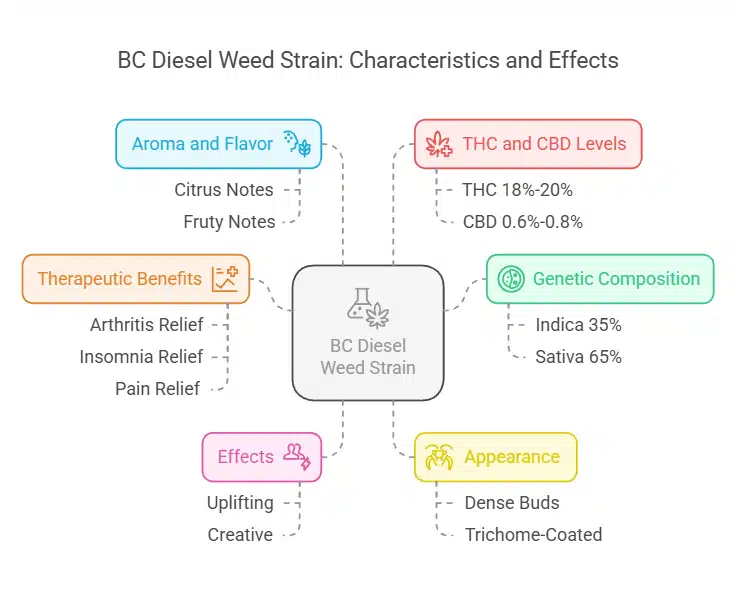
Setting Up the Growing Space
Before planting BC Diesel, prepare your growing space to accommodate the strain’s vigorous growth. Whether indoors or outdoors, organizing your space effectively ensures a smoother cultivation process.
Indoor Setup
Invest in a grow tent or dedicated grow room with sufficient vertical space. BC Diesel plants can grow tall, so provide enough headroom to prevent overcrowding. Install a carbon filter in the exhaust system to manage odor control. Ensure proper light coverage and minimize light leaks during the flowering phase to avoid stress.
Automated timers for lighting and ventilation help maintain consistent conditions. Regularly monitor temperature, humidity, and CO2 levels to support healthy growth. Consider using a dehumidifier or humidifier as needed to maintain optimal environmental parameters.
Outdoor Setup
Choose a planting site with direct sunlight exposure for most of the day. Preparing the soil by tilling and adding organic matter enhances nutrient availability. Use mulch around the base of the plants to retain moisture and regulate soil temperature.
Support structures such as stakes, cages, or trellises are recommended for BC Diesel. As the plants develop heavy buds, these supports prevent branches from breaking. Regularly inspect plants for pests and diseases, applying organic treatments when necessary.
Propagation and Germination of BC Diesel
Starting with quality BC Diesel seeds ensures genetic stability and healthy plants. Follow these steps for successful germination:
1. Soak the seeds in distilled water or place them between moist paper towels for 24-48 hours. Maintain a temperature of 70°F to 85°F (21°C – 29°C) in a dark environment.
2. Once the seeds develop taproots, transfer them to seedling trays or small pots filled with light, well-aerated soil.
3. Keep the growing medium moist but not waterlogged. Place the seedlings in a warm area with indirect light and maintain a humidity level of 60% to 70%.
4. Gradually increase light intensity as the seedlings grow. Ensure gentle airflow to strengthen the stems and prevent damping-off.
Transplant the seedlings into larger containers or outdoor beds once they develop several sets of true leaves. Provide sufficient space for root expansion and continued growth.
Vegetative Phase of BC Diesel Weed Strain
During the vegetative stage, BC Diesel focuses on building strong roots, stems, and leaves. This phase is crucial for the plant’s overall development and eventual yield. Ensuring proper light, nutrients, and water is essential to support robust growth.
Lighting and Growth Stimulation
Maintain a light cycle of 18-20 hours per day during the vegetative phase. High-intensity LED or HPS grow lights provide the necessary light spectrum for vigorous photosynthesis. Proper light positioning helps prevent stretching and encourages a denser canopy.
Nutrition and Soil Management
BC Diesel requires a nutrient mix rich in nitrogen during this phase to support foliage development. Organic or synthetic fertilizers can be used, but it is important to monitor pH and nutrient levels to avoid deficiencies or toxicities. Supplementing with calcium and magnesium can enhance overall plant health.
Watering and Training Techniques
Water the plants when the top inch of soil dries out. Avoid waterlogging to prevent root rot. Implement training techniques such as low-stress training (LST), topping, or pruning to promote lateral growth and create an even canopy. These methods improve light penetration and airflow, which are vital for preventing mold and pests.
Flowering Phase of BC Diesel Weed Strain
During the flowering phase, BC Diesel shifts its energy towards bud production. This is when the plant’s potency, flavor, and aroma fully develop. Proper environmental control and nutrition are key to maximizing yields and quality.
Light Cycle Adjustment
Switch the light schedule to 12 hours of light and 12 hours of darkness to induce flowering. Use a timer to maintain a consistent cycle. Light leaks during the dark period can disrupt flowering and cause stress or reversion to the vegetative stage.
Nutrient Transition
Transition from a nitrogen-heavy fertilizer to a bloom formula with higher levels of phosphorus and potassium. These nutrients are essential for healthy bud development and resin production. Consider adding bloom boosters or supplements rich in amino acids and micronutrients to enhance flower density and terpene synthesis.
Environmental Management
Maintain temperatures between 65°F and 75°F (18°C – 24°C) and humidity around 40%-50%. Proper airflow helps prevent moisture buildup, which can lead to bud rot or mold. Installing oscillating fans and exhaust systems improves ventilation and temperature control.
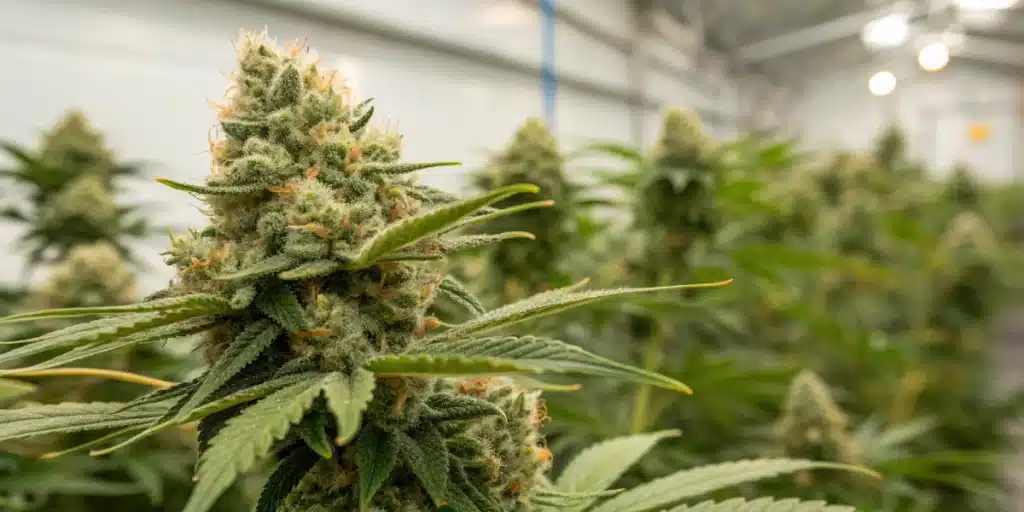
Cannabis Fertilization and Nutrition
BC Diesel requires a balanced feeding schedule tailored to its growth stage. Providing the right nutrients at the right time helps optimize growth and maximize yield.
Choosing the Right Fertilizer
Select cannabis-specific fertilizers that provide macronutrients (nitrogen, phosphorus, potassium) and micronutrients (calcium, magnesium, iron). Organic amendments such as compost teas and worm castings can enhance soil fertility and microbial activity.
Feeding Schedule and Monitoring
Start with lower nutrient concentrations and gradually increase based on plant response. Overfeeding can cause nutrient burn, while deficiencies can stunt growth. Use soil and water testing kits to monitor pH and electrical conductivity (EC) levels regularly.
Flushing and Final Preparation
Flush the plants with pure water during the last two weeks of flowering. This helps remove excess nutrient salts, improving the flavor and smoothness of the final product. Proper flushing ensures that the harvested buds have minimal residual chemicals.
Pest and Disease Control
Maintaining healthy plants reduces the risk of pests and diseases. However, growers should still be vigilant and take preventive measures.
Preventive Practices
Implement integrated pest management (IPM) strategies, including regular plant inspections, maintaining cleanliness in the grow area, and introducing beneficial insects like ladybugs and predatory mites. Healthy airflow and humidity control further reduce the likelihood of mold and mildew.
Organic Control Solutions
If pests such as spider mites, aphids, or thrips are detected, use organic insecticides like neem oil or insecticidal soap. Avoid using harsh chemicals that can affect the plant’s quality. For fungal issues, organic fungicides such as potassium bicarbonate sprays can be effective.
Harvesting and Curing for BC Diesel
Proper harvesting and curing techniques are essential to preserve BC Diesel’s potency, aroma, and flavor. Timing is critical to achieve optimal trichome maturity.
Trichome Inspection
Use a magnifying glass or microscope to examine the trichomes. Harvest when they turn milky white with some amber hues. This indicates peak cannabinoid content and balanced effects.
Drying and Curing Process
Cut the branches and hang them upside down in a dark, well-ventilated space with a temperature of 60°F to 70°F (15°C – 21°C) and humidity of 50%-60%. Allow the buds to dry for 7-14 days.
Once dried, trim the buds and place them in airtight jars for curing. Store in a cool, dark place and burp the jars daily during the first week to release excess moisture. Continue curing for at least 2-4 weeks to enhance the flavor and potency.
Similar Strains to BC Diesel
For those who enjoy BC Diesel, here are three similar strains that offer comparable effects and flavors:
Jack Herer
Jack Herer is a Sativa-dominant hybrid known for its uplifting, creative effects. It has a piney, herbal aroma with hints of citrus. This strain’s balanced profile makes it a favorite for both recreational and medicinal users.
NY Diesel
NY Diesel delivers an energizing high with a strong citrus and fuel-like aroma. Its stimulating effects make it ideal for daytime activities. The strain shares genetic ties with BC Diesel, contributing to its fruity and refreshing characteristics.
Sour Diesel
Sour Diesel is a potent Sativa with fast-acting cerebral effects. It features a pungent, diesel-like aroma and a lemony aftertaste. Known for boosting focus and creativity, it is a popular choice among cannabis connoisseurs.
Tips for Professional Growers
Professional cultivators can maximize BC Diesel yields by utilizing advanced techniques such as CO2 supplementation, automated irrigation, and climate control. Consistent monitoring of environmental parameters ensures optimal growth conditions throughout each phase.
FAQs About BC Diesel Weed Strain
What are the effects of BC Diesel?
BC Diesel provides a creative, euphoric, and uplifting experience. It’s ideal for daytime use and enhancing focus or creativity.
How long does BC Diesel take to flower?
BC Diesel typically has a flowering period of 8 to 10 weeks, depending on growing conditions and phenotype.
Is BC Diesel suitable for beginners?
Yes, BC Diesel is beginner-friendly due to its resilience and relatively straightforward cultivation requirements.
What are the primary flavors of BC Diesel?
BC Diesel is characterized by citrus and fruity flavors, making it a refreshing choice for users who enjoy zesty strains.
How much THC does BC Diesel contain?
BC Diesel has a THC content ranging from 18% to 20%, delivering potent effects without being overwhelming.




